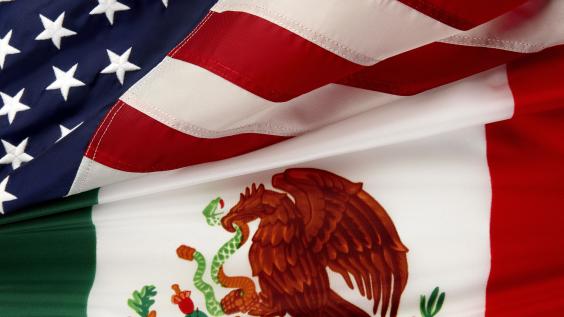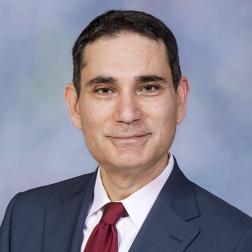Relaunching U.S.-Mexico Relations: The Challenges Ahead

Table of Contents
Author(s)
Tags
Introduction
The virtual meeting this week between President Joe Biden and Mexico’s President Andrés Manuel López Obrador replayed many of the same themes that have long cut through the binational relationship. This time, however, the tone was more cordial, thanks in part to Biden’s diplomatic style, which is markedly different from that of his predecessor. Still, he was no less firm in his understanding of the relationship and what he envisions for it.
López Obrador, for his part, made clear that he is coming from a different place when, in preparation, he anticipated that the binational relationship can only work if the U.S. abstains from seeing Mexico as the United States’ “backyard.” This is the same defensive position he took under the Trump administration, suggesting that López Obrador does not see the U.S. as an ally and a friend but instead, as a threat to Mexico’s interests.
Biden and López Obrador do not seem to be starting from the same point, one that embodies the idea of a strategic partnership on an equal footing. This will make further cooperation more difficult. Only the weight of the two country’s material interests may move the needle in one direction or the other. It also explains why very little substantive progress was made during the meeting. Plainly, the relationship can work, but there is much to be done, and Mexico will have to do the heavy lifting when it comes to almost every single item on the table.
The Coronavirus Pandemic
A key priority for Mexico was to ensure access to U.S.-made vaccines against the coronavirus. López Obrador is in a tough position, largely due to his own mismanagement of the pandemic, which has already cost the lives of nearly 200,000 Mexicans — and some studies estimate many more. Biden made it clear in advance that Mexico cannot expect the U.S. to solve Mexico’s pandemic-related problems — at least not while the White House is still trying to steady the previous administration’s poor response to the pandemic. Americans are the priority, and they should be, just as Mexicans should be López Obrador’s priority. But when it comes to securing U.S.-made COVID-19 vaccines, López Obrador has no good news for Mexico. His vaccine diplomacy will have to wait for another day.
Immigration
López Obrador expressed his desire for a guest worker program that would allow hundreds of thousands of Mexicans and Central Americans to work temporarily in the U.S. — a “bracero” style labor program. Biden made it clear that to advance this idea, the U.S. Congress must act. Realistically, it is not likely to do so. Biden cannot expect Republicans — and probably not even many Democrats — to support a guest worker program when there are nearly 12 million unemployed Americans. Moreover, for Biden, the priority is those who are already in the United States and have been here for decades — from the DACA and TPS beneficiaries to those who have U.S.-born children. He will not spend political capital at this point trying to put a guest worker program into place.
Both presidents agreed to look for legal and orderly pathways for immigration in the future. However, that is also not likely to happen soon. For professionals and other such classes of workers, which López Obrador included in a statement about the guest worker program, there is already a well-established mechanism: TN visas, which were created under NAFTA and kept under its successor, the USMCA. That visa provides for unlimited visas for professionals and will not change. TN visa numbers will rise (and fall) with the U.S. economic recovery and labor market pressures from within, but not in response to a request from López Obrador. On this score, he also has no good news to deliver to Mexico.
López Obrador’s proposal, however, has a reason to be. He has discovered that, under Mexico’s current, dismal economic circumstances, the USD41 billion that Mexican migrants sent to Mexico last year can aid in the country’s recovery. Remittances are now Mexico’s second-highest source of income, next only to automobile exports and exceeding tourism and certainly oil exports. He might figure that adding more Mexican workers to the U.S. labor force might help Mexico.
Energy and the Environment
At the intersection of energy and the environment, the two leaders will have difficulty finding common ground. Mexico’s electricity law, passed just a week ago, is expected to run afoul of its commitments regarding climate change and to push against the interests of many companies, including U.S. energy corporations. There will be legal action, and the U.S. government is likely to side with investors. Biden will not budge on climate change goals and will pressure Mexico to move in the right direction. This issue is not likely to go away, and it is only now heating up. López Obrador should not expect to deliver good news on either side of the energy-environment equation.
Trade
Trade enormously benefits both countries. This is widely acknowledged, even by López Obrador, who signed on to the USMCA. But the U.S. is likely to pay very close attention to Mexico’s compliance with USMCA provisions, especially those on labor issues. As a candidate, Biden made important commitments to labor and unions, and he is likely to follow through in part by demanding that Mexico honor its USMCA commitments. Although López Obrador may also have his workers’ interests in mind — desiring, for instance, to increase salaries — he knows that Mexico’s competitiveness is rooted in workers who are cheated of decent salaries. López Obrador needs a competitive economy to help Mexico recover from an economic slump. So in this area, too, he finds himself between a rock and a hard place.
The Rule of Law
The López Obrador administration’s frontal attack on its regulatory, watchdog and transparency agencies is not advancing the rule of law in Mexico. His actions are creating a very uncertain environment, disincentivizing domestic and foreign investment, precisely at a time when Mexico needs it the most. Many businesses are already reconsidering their investments in Mexico, and foreign investment has steadily fallen under his watch. López Obrador has also employed an abrasive style of politics against the press, opposition parties, and all of his critics, adding to the fear that he is endangering certain aspects of Mexico’s still-fragile democracy. In fact, under his watch, Mexico has lost ground in an annual ranking of democracy around world [1]. This sets Mexico apart from the U.S. and Canada, making it more difficult to establish a true partnership based on shared values.
Worse, López Obrador has accomplished very little in terms of tackling organized crime and has instead limited the activities of foreign agents on Mexican soil; his actions target American activities in Mexico against organized crime affecting the United States. Biden is likely to push back against such moves, and López Obrador will have to choose whether to cooperate hand-in-hand with the U.S. to confront crime in Mexico, or confront the Biden administration and appear to coddle criminals in Mexico. Once again, López Obrador is in a tough spot.
Conclusion
Despite a tough binational agenda, the completely different tone in the White House is new and refreshing. Biden knows what he wants, and he will pursue it systematically. It is up to Mexico to respond in kind and turn toward strengthening the relationship. The old nationalistic discourse that made U.S.-Mexico relations difficult in the pre-NAFTA era and that López Obrador is committed to will not help. Whether López Obrador can go beyond that and think in terms of a strategic partnership, one that is good for both countries, is still to be seen. Of course, this is only the beginning, but already the clock is ticking.
Endnotes
1. See The Economist, “Democracy Index, 2020,” Table 2, page 10 and Table 3, page 22. https://bit.ly/3Iyks7h.
This material may be quoted or reproduced without prior permission, provided appropriate credit is given to the author and Rice University’s Baker Institute for Public Policy. The views expressed herein are those of the individual author(s), and do not necessarily represent the views of Rice University’s Baker Institute for Public Policy.



